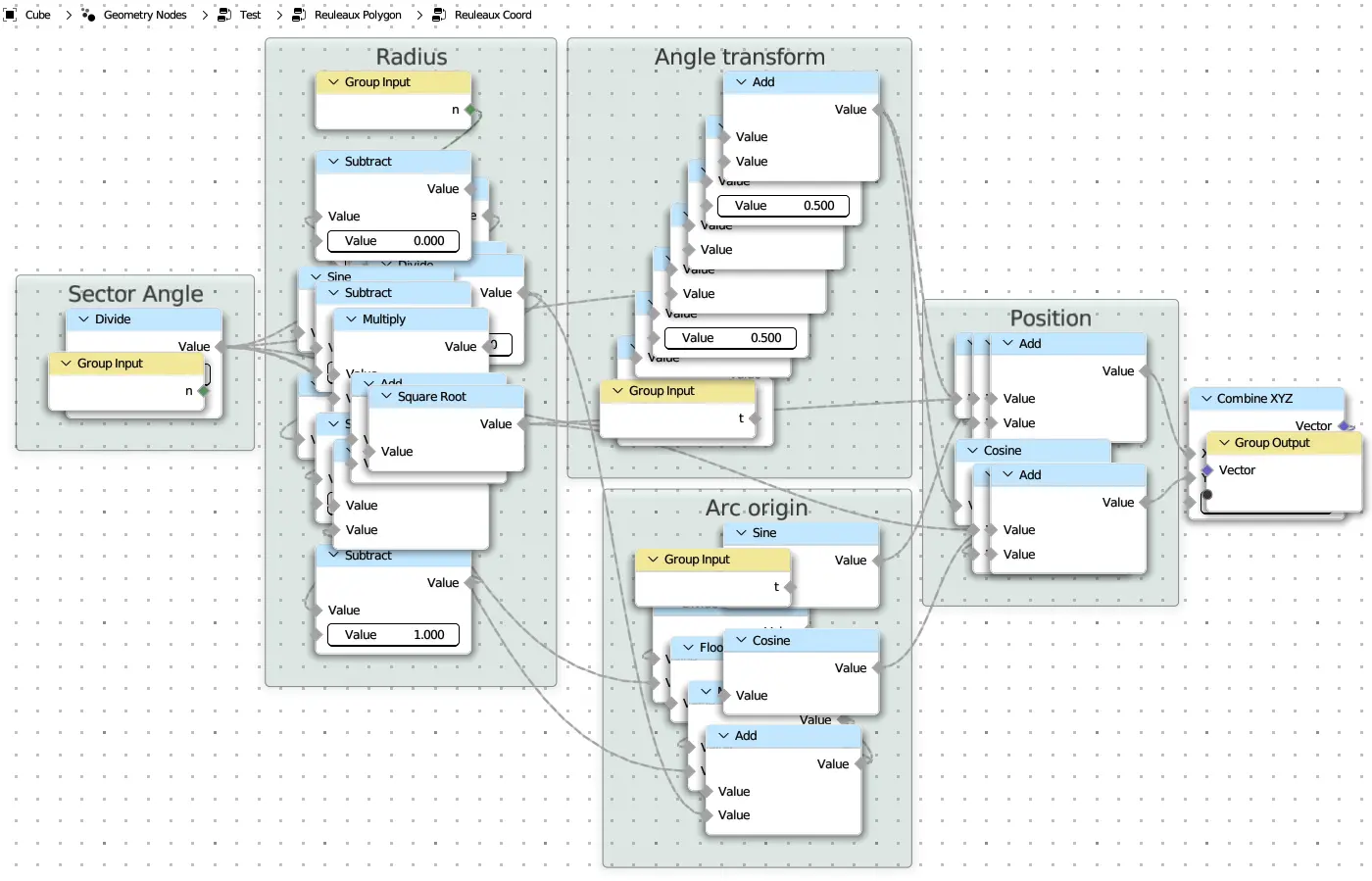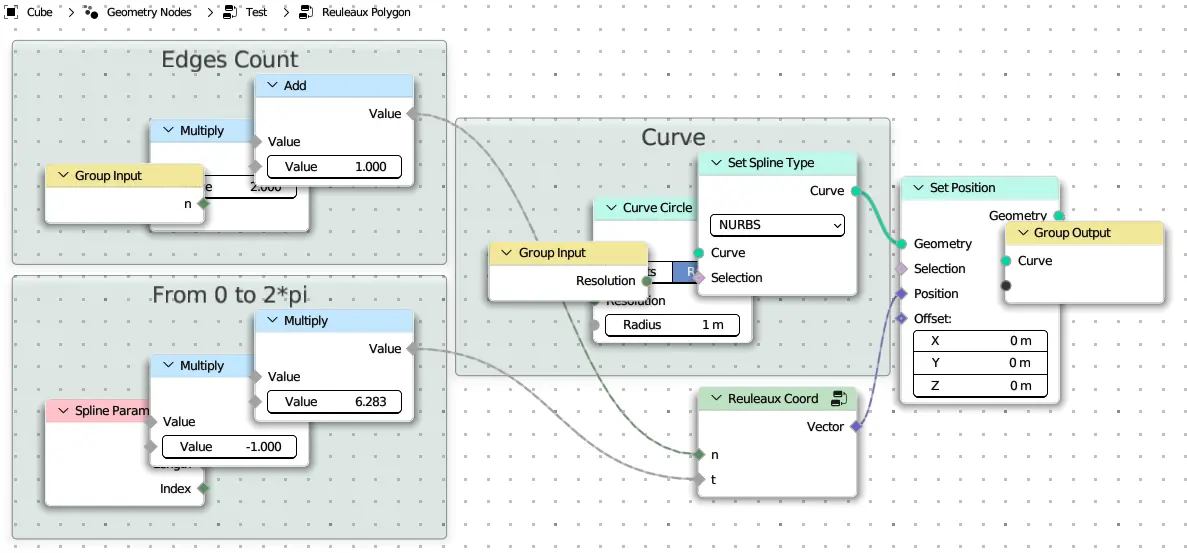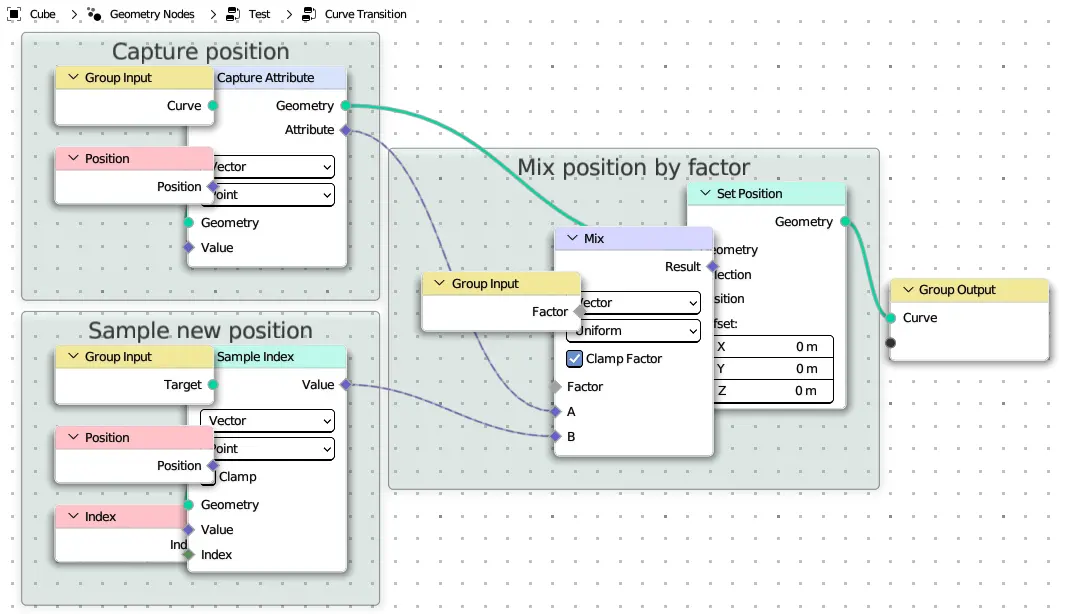Reuleaux Polygon#
In geometry, a Reuleaux polygon is a curve of constant width made up of circular arcs of constant radius.
Regular Polygon#
Calculate the coordinate of Reuleaux Polygon#
reuleaux_coord

@tree
def reuleaux_coord(n: Integer, t: Float):
with frame("Sector Angle"):
k = tau / n
with frame("Radius"):
v = k * (n + 1) / 2
x0, y0 = 0, 1
x1, y1 = sin(v), cos(v)
r = sqrt((x1 - x0) * (x1 - x0) + (y1 - y0) * (y1 - y0))
with frame("Arc origin"):
a = floor(t / k) * k + v
m = sin(a)
n = cos(a)
with frame("Angle transform"):
b = (floor(t / k) + 0.5) * k
c = b + (t - b) * 0.5
with frame("Position"):
x = m + r * sin(c)
y = n + r * cos(c)
return CombineXYZ(x, y, 0)
N-side Reuleaux Polygon#
reuleaux_polygon

@tree
def reuleaux_polygon(n: Integer = (1, 1, 5), resolution: Integer = 256):
with frame("Curve"):
curve = CurveCircle(resolution=resolution).set_spline_type_nurbs()
with frame("From 0 to 2*pi"):
t = -curve.parameter.factor * tau
with frame("Edges Count"):
n = 2 * n + 1
curve.set_position(reuleaux_coord(n, t))
return curve
Curve Transition#
curve_transition

@tree
def curve_transition(curve: Curve, target: Curve, factor: Float = (0, 0, 1)):
with frame("Capture position"):
pos = curve.capture_vector_on_points(curve.position)
with frame("Sample new position"):
new_pos = target.sample_vector_at_index(target.position, target.index)
with frame("Mix position by factor"):
curve.set_position(pos.mix(new_pos, factor))
return curve


